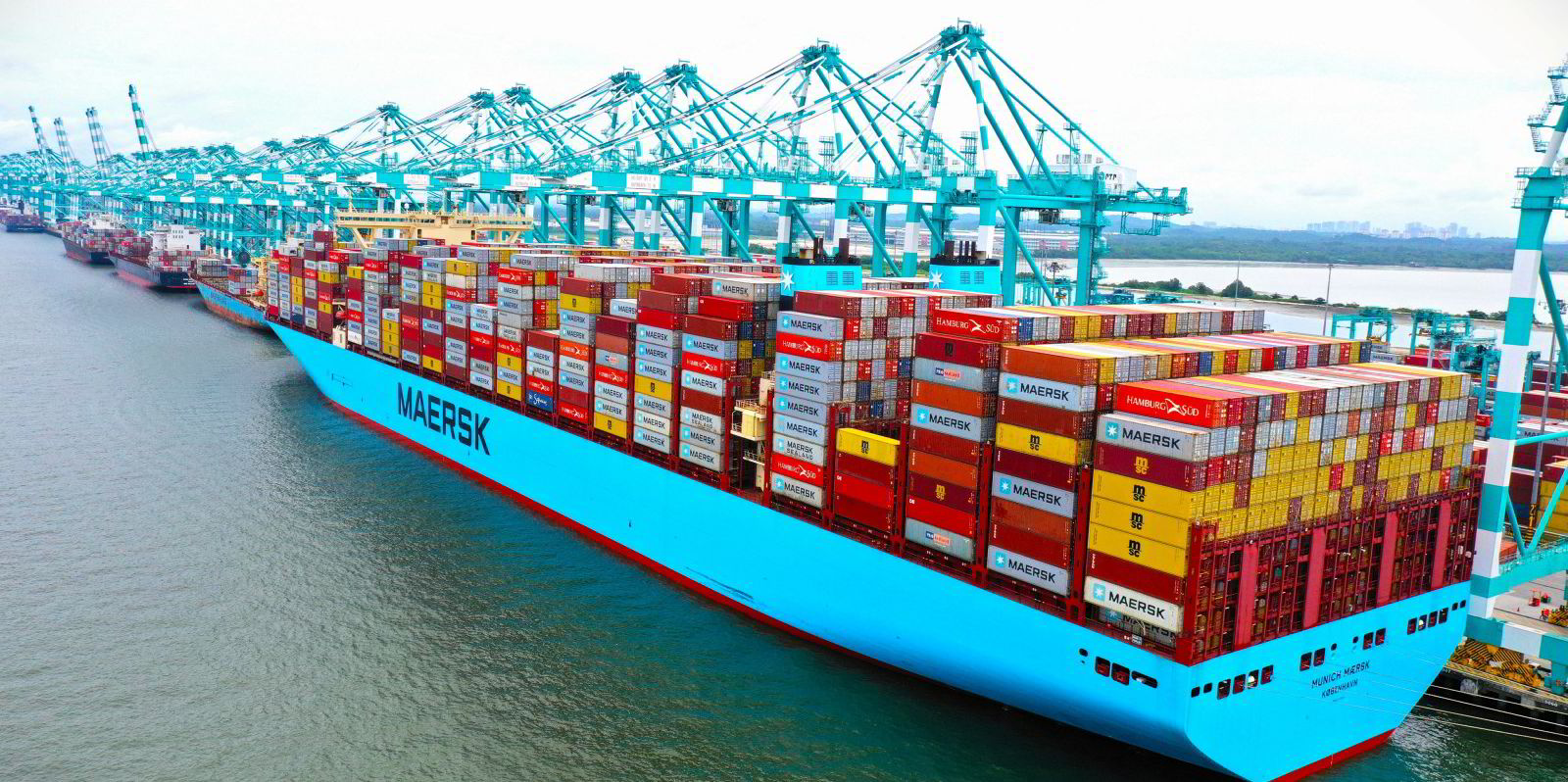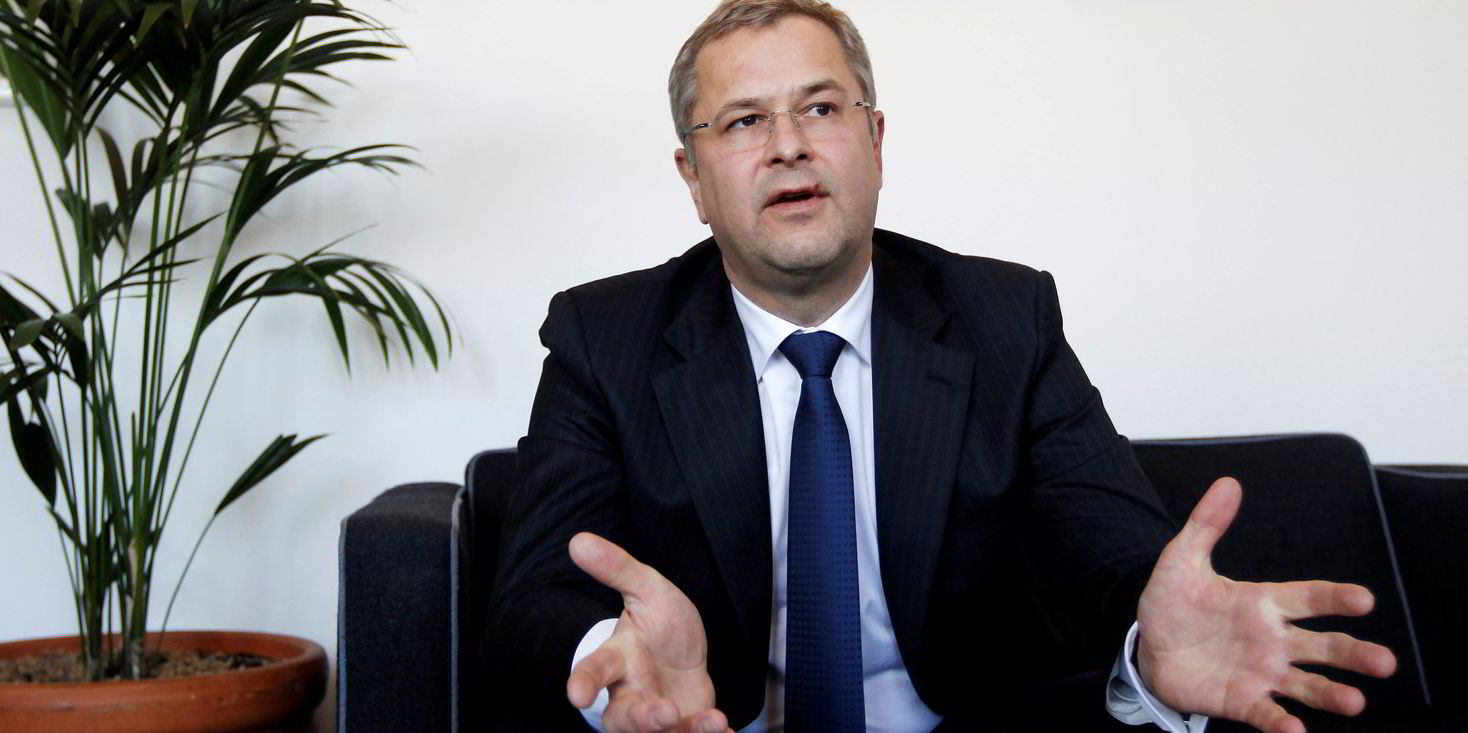AP Moller-Maersk will slash capacity to meet falling container shipping demand in the coming months.
The Danish liner giant currently deploys about 4.2m teu of capacity, but has been removing vessels from trades as rates have fallen.
“If demand drops, then we will take capacity out in that same percentage,” chief executive Soren Skou told a conference call on Wednesday.
In the transpacific and Asia-Europe trades, around 15% of capacity has already been removed from the container shipping market, he said.
“So one could expect you will see more capacity adjustment to meet demand in the coming quarters — at least, that would be our strategy,” he said.
The capacity withdrawal follows the faster-than-expected slowdown in container shipping demand, which led the company to lower its projections for the full year.
Maersk has lowered its outlook for the growth of 2022 demand to between -2% and -4%, down from the previous estimate of +1% to -1%.
The downgrade stems from the unfolding economic slowdown, which it expects will continue into the coming year.

Freight rates had started to decline in the third quarter, due to weakening customer demand and easing of supply chain congestion.
Container volumes carried by Maersk in the first nine months were 7% lower.
That was roughly in line with other liner operators such as Cosco Shipping of China and Japan’s Ocean Network Express, which have seen volumes drop by between 8% and 10%.
“The positive aspect of the normalisation of markets is that lower demand will allow global supply chains to progressively improve,” Skou said.
Lower volumes have fed through to contract rates, which are slightly lower than expected.
The sharp fall in spot freight means new contracts will probably be negotiated at lower levels.
“Obviously we are negotiating contracts in a different environment to a year ago, so it’s a fair assumption we will see lower rates,” Skou said.
Obviously we are negotiating contracts in a different environment to a year ago, so it’s a fair assumption we will see lower rates
— Soren Skou
Maersk has more than 1.9m 40-foot equivalent units (feu) signed on multi-year deals.
The share of long-haul contract volumes remained flat at 71%.
But the company has reduced its guidance for average contract rates this year to $1,700 per feu, down from $1,900 per feu.
The company reported its 16th consecutive quarter with year-on-year earnings growth.
It posted a profit of $8.9bn for the third quarter, up from $5.5bn a year earlier.
That doubled profits to $24.2bn for the first nine months.
However, the coming period is likely to be “a more volatile business environment”, according to Skou. “With the war in Ukraine, an energy crisis in Europe, high inflation and a looming global recession, there are plenty of dark clouds on the horizon,” he said.
“This weighs on consumer purchasing power, which in turn impacts global transportation and logistics demand.”
Revenues increased by $6.2bn to $22.8bn in the third quarter, due mainly to a $4.9bn rise in earnings in the Ocean division.
Ebitda increased to $10.9bn and Ebit rose to $9.5bn, up 60% from the same period last year, driven mainly by significantly higher contracted freight rates and shipment on routes from Asia to Europe and from Asia to North America.
Global container volumes declined 3% year on year.
“As anticipated all year, earnings in Ocean will come down in the coming periods,” Skou said.
“As we see, there is no crystal ball to predict timing entirely, but we have been anticipating normalisation and we are prepared to meet it.”
Boxship demand is expected to contract, but uncertainty remains high.
The likelihood of growth ending up in the lower range of Maersk’s guidance is more likely, given the macroeconomic backdrop risks.
Supply-side bottlenecks remain prevalent, but there are signs of easing, Maersk said.
Danish analyst SeaIntel’s data shows that the share of the global container fleet absorbed by delays decreased from a peak in January 2022 of almost 14% to a still elevated 8% in September.
Maersk has maintained its full-year guidance for underlying Ebitda of around $37bn, an underlying Ebit of about $31bn and a free cash flow of more than $24bn.
Capital expenditure guidance for 2022-2023 remains unchanged at $9bn to $10bn.







